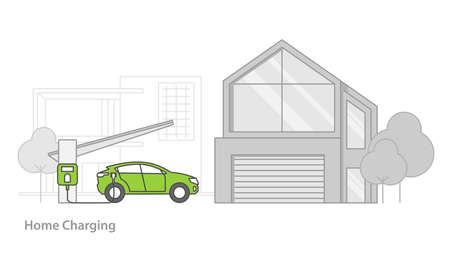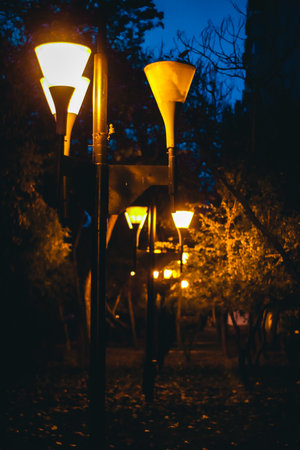Understanding the Essentials of British Garden Lighting
Outdoor lighting is an integral element of contemporary British garden design, blending both functionality and aesthetics to create inviting spaces year-round. When planning outdoor illumination, it is crucial to understand not only the technical fundamentals but also the unique preferences and legal requirements that define garden lighting in the UK.
Key Principles of Outdoor Lighting
Effective garden lighting achieves a balance between safety, security, and visual appeal. British homeowners typically favour subtle, ambient solutions that enhance natural beauty rather than overpower it. The most popular approaches involve accentuating architectural features, creating pathways with gentle light, and illuminating focal points such as water features or mature trees.
UK-Specific Regulations
Garden lighting installations in Britain are subject to specific regulations designed to ensure safety and minimise environmental impact. Compliance with Part P of the Building Regulations is mandatory for any electrical work outdoors, requiring either a qualified electrician or official sign-off. Additionally, local councils may have restrictions on light pollution, especially in rural or conservation areas. The following table summarises key regulatory considerations:
| Regulation/Requirement | Description | Applicability |
|---|---|---|
| Part P Building Regulations | Electrical work must be completed by a certified professional or inspected accordingly. | All outdoor electrical installations |
| Light Pollution Controls | Restrictions to prevent excessive spill into neighbouring properties or wildlife habitats. | Urban, rural, and conservation zones |
| IP Ratings for Fixtures | Luminaires must meet specific Ingress Protection (IP) ratings for outdoor use. | All external lighting fixtures |
| Cable Routing Standards | Cables should be buried at regulated depths and protected from physical damage. | Permanent garden lighting installations |
Cultural Preferences in British Gardens
The British approach to outdoor lighting tends toward understated elegance. Homeowners often opt for warm colour temperatures, energy-efficient LED technology, and discreet fixtures that blend seamlessly with their gardens’ natural character. Sustainability is also a growing priority, with solar-powered lights and smart control systems increasingly favoured for their low environmental impact and cost-effectiveness.
Planning Your Outdoor Lighting Scheme
Creating an effective outdoor lighting plan is essential for enhancing the beauty, security, and functionality of British gardens. Proper planning not only elevates your outdoor space but also ensures compliance with local regulations and standards. Below is a step-by-step guide to help you assess your garden layout, environmental conditions, and usage patterns, so you can develop a tailored lighting scheme for your home.
Assessing Your Garden Layout
Begin by mapping out the key features of your garden—such as paths, patios, flower beds, water features, and seating areas. Understanding these elements will inform where lighting is most needed and which types will be most effective. Consider the natural flow of movement throughout your garden and highlight both functional zones (e.g., walkways) and focal points (e.g., specimen trees).
| Garden Feature | Recommended Lighting Type | Purpose |
|---|---|---|
| Pathways | Bollard lights or recessed ground lights | Safety and wayfinding |
| Patios/Decks | Wall-mounted or spike spotlights | Ambient and task lighting for social areas |
| Ponds/Water Features | Submersible or underwater LEDs | Dramatic effect and safety at night |
| Trees/Shrubs | Up-lighting or fairy lights | Create depth and visual interest |
| Entrances/Gates | PIR motion sensor lanterns | Security and welcome lighting |
Understanding Environmental Considerations
The British climate presents unique challenges for outdoor electrical installations. Select fixtures with appropriate IP ratings to withstand rain, frost, and occasional snow. Additionally, consider light pollution: opt for downward-facing fittings or shielded designs to minimise glare and avoid disturbing neighbours or local wildlife.
Key Environmental Factors to Address:
- Weather Resistance: Use corrosion-resistant materials such as stainless steel or powder-coated aluminium.
- Light Pollution: Comply with UK guidelines by avoiding excessive brightness and ensuring all exterior lights are installed responsibly.
- Sustainability: Choose energy-efficient LED bulbs and consider solar-powered options where feasible.
Identifying Usage Patterns & Objectives
Your outdoor lighting should be tailored to how you use your garden. Whether you’re hosting evening gatherings, seeking enhanced security, or simply enjoying your landscape after dark, defining your primary objectives will shape your scheme’s design.
| User Objective | Lighting Solution Example |
|---|---|
| Entertainment & Ambience | Dimmable festoon lights over patios or pergolas for a cosy atmosphere. |
| Security & Safety | PIR-activated floodlights at access points; low-level path lighting along driveways. |
| Aesthetic Enhancement | Spotlights highlighting architectural planting or statuary. |
Legal Compliance & Best Practice in the UK
It’s vital to ensure that all electrical work meets current British Standards (BS 7671) and Part P Building Regulations. Engage a qualified electrician registered with a competent person scheme for installation. Planning permissions may apply in conservation areas or for listed properties—check with your local authority before proceeding.
By thoroughly assessing your garden’s structure, environmental factors, and intended use, you lay the foundation for a safe, attractive, and compliant outdoor lighting scheme perfectly suited to British homes.

3. Selecting Suitable Lighting Fixtures and Technologies
Choosing the right lighting fixtures and technologies is a pivotal step in creating a functional, visually appealing, and sustainable British garden. Homeowners in the UK must consider not only aesthetics but also energy efficiency, weather resistance, and long-term environmental impact.
A Review of Popular Fixture Types
| Fixture Type | Common Use | Key Benefits |
|---|---|---|
| Bollard Lights | Pathways, driveways, borders | Durable, provide clear guidance along walkways |
| Spike Lights | Highlighting plants or garden features | Flexible positioning, easy to install and adjust |
| Wall Lights | Patios, house walls, entrances | Enhance security, create ambient atmosphere |
| Decking/Step Lights | Steps, decking edges, terraces | Improve safety, subtle integration into structures |
| Pendant & Festoon Lights | Outdoor dining areas, entertaining spaces | Create warm, inviting ambience for gatherings |
| Pond & Underwater Lights | Ponds, water features, fountains | Add drama and highlight water movement safely |
Energy-Efficient Technologies Commonly Used in UK Gardens
- LED Technology: Favoured for its low power consumption and long lifespan. LEDs are available in various colour temperatures to suit different garden moods.
- Solar-Powered Fixtures: Increasingly popular for eco-conscious gardeners; ideal for remote areas where wiring is impractical. Performance may vary with seasonal sunlight levels.
- Smart Lighting: Integration with home automation systems allows scheduling and remote control via smartphone apps – a contemporary solution for convenience and energy management.
Guidance on IP Ratings: Ensuring Weather Resistance
The unpredictable British climate demands that outdoor lighting be suitably weatherproof. The Ingress Protection (IP) rating system measures resistance to solids and liquids. For UK gardens:
| Area of Installation | Minimum Recommended IP Rating | Description |
|---|---|---|
| General Outdoor Areas (walls/pathways) | IP44 | Splash-proof against rain from any direction; suitable for most exposed locations. |
| Ponds/Water Features/Submerged Areas | IP68 | Sustained immersion in water; essential for underwater lights. |
Sustainability Considerations for British Gardens
- Select fixtures made from recycled or recyclable materials such as aluminium or stainless steel.
- Avoid excessive illumination to minimise light pollution and protect nocturnal wildlife—an important consideration under UK planning policies.
- Opt for energy-efficient bulbs (preferably LED) and use timers or motion sensors to reduce unnecessary usage.
Your Next Steps in Fixture Selection
A careful assessment of your garden’s unique needs alongside adherence to local standards ensures your outdoor lighting is both effective and environmentally responsible. Consulting a professional installer can help navigate complex installations or compliance with building regulations.
4. Complying with UK Installation Standards and Legal Requirements
Ensuring your outdoor lighting project adheres to British legal, safety, and electrical installation standards is crucial. Non-compliance can result in fines, safety hazards, or costly corrections. Below, we outline key considerations and steps for British homeowners.
Understanding the Legal Framework
Outdoor electrical installations in the UK must comply with Part P of the Building Regulations. This requires all fixed electrical installations in gardens to be designed and installed safely to prevent electric shock or fire risks. Additionally, local planning permissions may be necessary if your lighting impacts neighbours or wildlife.
When Is Planning Permission Required?
| Lighting Scenario | Planning Permission Needed? |
|---|---|
| Standard garden pathway lights | No (if not excessively bright or intrusive) |
| Floodlighting or security lighting visible from public roads | Often Yes |
| Listed property or within conservation area | Likely Yes – Check with local council |
| Affects protected species (e.g., bats) | Consult Natural England |
Selecting Qualified Professionals
Electrical work outdoors should always be carried out by a registered electrician. Look for professionals registered with a government-approved scheme such as NICEIC, ELECSA, or NAPIT. This ensures compliance and provides you with certification upon completion.
Checklist: Choosing the Right Electrician
- Verify registration with an approved body (NICEIC/ELECSA/NAPIT)
- Request proof of insurance and references from previous garden projects
- Ensure familiarity with Part P and BS 7671 wiring regulations
- Ask for a written quotation and a compliance certificate post-installation
Safety Standards and Best Practices
The relevant British Standard for outdoor lighting installations is BS 7671 (IET Wiring Regulations). Key requirements include using weatherproof fittings (IP44 rating or higher), suitable armoured cabling (SWA), and RCD protection for all circuits.
| Component | UK Standard/Requirement |
|---|---|
| Cabling | SWA cable, buried at least 600mm deep where crossing gardens/lawns |
| Luminaires | Minimum IP44 rating for weather resistance |
| Circuit Protection | RCD (Residual Current Device) required on all outdoor circuits |
| Certification | EIC (Electrical Installation Certificate) provided by installer |
Documentation and Ongoing Compliance
Upon completion, ensure you receive all necessary documentation, including compliance certificates and user manuals. Retain these documents as they may be required when selling your home or making insurance claims. Regularly test RCDs and inspect cables for wear to maintain safety standards over time.
5. Installation Process: Best Practices for British Gardens
Proper installation is critical to the effectiveness and longevity of outdoor lighting in British gardens. This section provides a comprehensive, step-by-step guide tailored for the unique layouts, climate, and security requirements commonly found in the UK.
Step 1: Site Assessment and Planning
Begin by evaluating the garden’s layout, identifying key features such as pathways, patios, water elements, and planting beds. Map out areas requiring illumination for functionality and aesthetics while considering potential security hotspots like entrances and dark corners.
| Feature | Recommended Lighting Type | Security Consideration |
|---|---|---|
| Pathways | Bollard or recessed lights | Ensures safe navigation after dark |
| Pergolas/Patios | Wall-mounted or string lights | Deters unwanted entry to seating areas |
| Shrubbery/Fences | Spotlights or floodlights | Eliminates hiding spots around property perimeter |
| Entrances/Gates | PIR motion sensor lights | Alerts household to movement near entry points |
Step 2: Selecting Suitable Fixtures and Materials
Choose fixtures designed to withstand the British climate. Opt for weather-resistant materials such as stainless steel, copper, or powder-coated aluminium, and ensure IP ratings are suitable for outdoor use (IP44 minimum for general outdoor areas; IP65+ for exposed zones).
Cable Selection and Routing
Select armoured or heavy-duty cables rated for underground or external use. Plan cable routes to avoid accidental damage during gardening activities, keeping them at least 30 cm deep when buried.
Step 3: Installation of Power Supply and Controls
If connecting to mains electricity, always engage a qualified electrician in compliance with UK wiring regulations (BS 7671). Consider installing RCD protection and smart controls to enhance safety and convenience.
Alternative Power Sources
- Solar-powered: Easy to install; ideal for remote or less critical zones.
- Low-voltage systems: Safer for DIY installation; flexible placement options.
Step 4: Fixture Placement and Fitting
Install fixtures according to your plan, ensuring even coverage without glare or light pollution. Use adjustable mounts where possible to direct beams accurately. Test each fitting before securing permanently.
Step 5: Weatherproofing and Finishing Touches
Seal all joints with waterproof connectors and check that fixings are secure against wind and rain. Camouflage cabling with soil or mulch, taking care not to obstruct drainage channels common in British gardens.
Installation Checklist for British Gardens:
- All fixtures rated for outdoor use (check IP rating)
- Cables buried or concealed safely from pets and wildlife
- Tamper-proof fittings in vulnerable locations for added security
- Luminaires angled downwards to comply with Dark Sky recommendations and prevent neighbour disturbance
This structured approach ensures an efficient, compliant, and resilient lighting installation tailored specifically for British gardens.
6. Ongoing Maintenance and Troubleshooting
Ensuring the longevity, efficiency, and safety of your outdoor lighting system in a British garden requires a proactive approach to maintenance and prompt resolution of any issues that may arise. The UK’s unique climate—characterised by frequent rainfall, fluctuating temperatures, and periods of frost—demands particular attention to detail and regular upkeep.
Routine Maintenance for Outdoor Lighting
To keep your garden lighting performing at its best, implement a consistent maintenance schedule. Below is a recommended checklist tailored to the British climate:
| Task | Frequency | Details |
|---|---|---|
| Clean light fixtures | Monthly | Remove dirt, moss, or algae; use mild soap and water to avoid corrosion. |
| Check for water ingress | After heavy rain | Inspect seals and gaskets; replace if moisture is found inside fittings. |
| Inspect cables & connections | Quarterly | Look for wear, exposed wires, or rodent damage; ensure connections are secure and dry. |
| Replace bulbs/LEDs | As needed | Use weather-rated replacements compatible with the fitting. |
| Test timers & sensors | Biannually | Adjust for daylight changes (BST/GMT), ensure correct operation. |
Troubleshooting Common Issues in UK Gardens
Dampness and Condensation
The damp British environment can cause condensation within fittings or tripping of RCDs. Ensure all junction boxes are rated IP65 or higher, and consider silica gel packs inside enclosures for added protection.
Lamp Failure or Flickering Lights
This may indicate poor connections or moisture ingress. Switch off power before checking wiring, reseal cable entries with waterproof gel, and replace faulty lamps with those suitable for outdoor use in the UK.
Circuit Trips and Power Loss
If an RCD trips following wet weather, inspect for exposed cable joints or flooded fittings. Dry out affected areas thoroughly before restoring power. If the issue persists, consult a qualified electrician registered with NICEIC or a similar UK body.
Legal and Safety Considerations
Under British standards (such as BS 7671), any alterations to outdoor electrical installations must comply with Part P of the Building Regulations. Always document maintenance activities and engage certified professionals for significant repairs or upgrades to remain compliant and ensure insurance validity.
Top Tip:
Avoid using pressure washers near electrical fixtures as this can force water into seals. Instead, clean gently by hand.
7. Enhancing Ambience: Design Inspiration and Trends
Creating the perfect ambience in a British garden requires a thoughtful blend of current trends and classic design principles. Outdoor lighting is not only practical, but it also sets the mood, highlights architectural features, and makes your garden an inviting retreat all year round. Below, we explore popular trends alongside timeless British styles to inspire your next project.
Current Trends in British Garden Lighting
| Trend | Description | Popular Applications |
|---|---|---|
| Smart Lighting Systems | Wireless controls, scheduling, and app integration for flexible management. | Pathways, patios, security zones. |
| Sustainable & Solar-Powered Lights | Eco-friendly solutions that reduce energy consumption and maintenance costs. | Lawn edges, driveways, flower beds. |
| Layered Lighting | Combining various light sources at different levels to create depth and visual interest. | Trees, water features, seating areas. |
| Warm White LED Technology | Energy-efficient LEDs with a soft glow reminiscent of traditional incandescent lights. | Porches, pergolas, terraces. |
| Discreet Fixtures | Low-profile fittings that blend seamlessly into landscaping elements. | Borders, steps, stone walls. |
Classic British Outdoor Lighting Styles
- Victorian Lanterns: Timeless elegance often seen lining front paths or mounted on gateposts. Their ornate metalwork complements period properties beautifully.
- Cottage-Style Wall Lights: Subtle fixtures with frosted glass and muted tones evoke traditional English charm, ideal for patio walls and entrances.
- Copper Path Lights: Weathering naturally to a verdigris finish, these offer rustic appeal while guiding guests along garden walkways.
- Bollard Lights: Sturdy and understated, they provide gentle illumination around lawns and driveways without overpowering the landscape’s natural beauty.
- Pillar & Post Lamps: Perfect for larger gardens or long driveways; these offer stately grandeur reminiscent of country estates.
Design Inspiration: Combining Trends with Tradition
The most captivating outdoor spaces often result from combining new technologies with heritage aesthetics. For example, integrating smart LED lanterns allows you to enjoy both convenience and classic looks. Solar-powered copper path lights nod to tradition while embracing sustainability. Consider layering subtle ground-level uplights beneath mature trees with wall-mounted Victorian lanterns near seating areas for a balanced effect that feels both contemporary and enduring.
Key Takeaways for a Welcoming British Garden Ambience:
- Select fixtures that complement your property’s character—period homes suit ornate lanterns while modern builds pair well with sleek LEDs.
- Prioritise warm white lighting for a cosy atmosphere during long evenings outdoors.
- Add dimension by mixing ambient, accent, and task lighting according to how each space is used.
- Embrace sustainability by choosing solar or low-energy options where possible without compromising style.
- Regularly update your scheme as new technology becomes available—British gardens are living spaces that evolve with time and taste.

